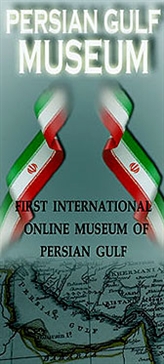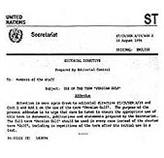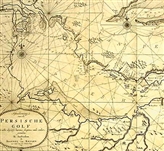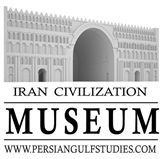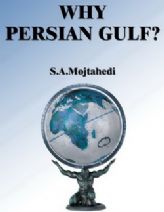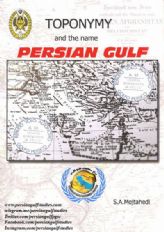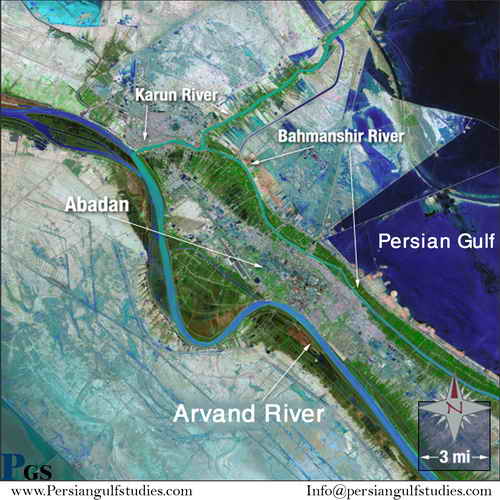
Arvand River
A memorial of thousands years of Persian’s Ancient civilization
Writer: Rozbeh Parsapoor
Translate by: Yasaman Gholami
Name Root Date
Tigra* Old Persian language 500 B.C
Tighar Avestan language ancient
Tjj Sanskrit ancient
Tigran Armenian ancient
Ti-gi-ra Elamite ancient
Di-iq-lat Babylon ancient
Digle Persian Sassanid
Tigris Greek 500 B.C
Arvand River** Avestan language Sassanid
Dijle Arabic form of Digle After Islam
Shat-Al-Arab Arabic After Islam
*the English term” Tiger” is taken from the Old Persian term "Tigra," means sharp and roaring
**Arvand River is the translation of Tigar, which comes in the ancient inscription of Great Darius.
Abstract:
Arvand River is one of the Iran-Iraq Border Rivers, which is located in Khorramshahr and Abadan. The length of its border is 84 kilometers. Arvand River constitutes of meeting of Tigris and Euphrates rivers in al-Qurnah, which is in 110 kMs north of Abadan. It passes from southeast of Basra, Iraq, Khorramshahr and Abadan and then in 8 kMs south of Arvandkenar joined to the Persian Gulf (Pars Sea). Unfortunately, Arabs of south of Persian Gulf had a long history in changing and faking the historical names and universal documents, thus the ancient name of Arvand River, which is related to 2500 years ago, is not accepted by them, and they called it Shatt-al-Arab, which has existed for 1400years. However, Arvand River, which is mentioned in the Shahnama and classical texts, is known in all formal correspondence in Iran. Arvand River is officially recognized in the Islamic consultative assembly in Iran as well. One of the reasons for 8years Iran-Iraq forced war was this river, which has the great importance for Iran. With tearing 1975 Algiers Arvand River agreement by Saddam Hussein, the longest war started. Iran has never overlooked the 50-50 rights of Iran and Iraq in any circumstances and in any government, because Iraq was a part of Iran for more than 2000 years, and the race of their people is not Arab. They just speak Arabic, which is mixed of Assyrian, Kurdish and Turcoman race. Found antiques and ancient places such as Al-Mada’in Ctesiphon and Hatra palace in north of Iraq, which were built by Iranian 1600 years ago, are just some facts about Iraq to be a part of Iran. Majority of the Shiite sect and religious solidarity with Iran show the connection. Thus, historical rights and background of a civilized nation like Iran, which based the first universal charter of human rights, is all around Middle East and these areas are part of Iran. Nevertheless, separate from historical issues, mouth of Arvand River is Arvandkenar in Iran and Faw in Iraq. Arvand River, Wild River, had been struggling for the recent century, and it has been struggled during the forced war, and many soldiers have been killed to defense it. Before that Iran was strong and owned many areas beyond Arvand River but quarrels started with England's colonialism and constructing small and fake countries like Iraq.
Background of Arvand:
Since the first empire was laid the basis and Assyria by Aryan’s Medes and Babylonia by Cyrus the Great were run_ Arvand River or Tigris flourished on the western countries of Iran. Iranian have made some dams on Tigris and Euphrates (Iraq), so the western part of Iran became fertile and Al-Mada’in Ctesiphon palace, which is one of the greatest capitals of the world was built by them besides the river, and commands have been made to east and west from this place. In this ancient capital that nowadays aliens has and destroys it, emperor of Rome kneeled down for Iran and west head down to prostrate east.(Inscription in Bishapur and Naqsh- e Rustam). Iranian, who were capable of agriculture and flourishing on the lands and were familiar with making dams and preventing from storms and flowage, developed and flourished Mesopotamia, which is a desert . Nowadays, many of the villages around Tigris and Euphrates have kept their Iranian names.
Tigre is remained from the first empire of the world, and it means sharp-fast and rebel. The history of this name is because of the flood and destruction that storms brought about over and over. Many dams have been made by Iran’s kings for protecting from these damages which storm even destroyed these dams.
The origins of this river in Zagros are long enough to make the feeder bed downhill, and overflow in rainy days of spring and continually fast flowage joined to the Tigris in Esfand(March), Farvardin(April), Ordibehesht(May) and cause storm. In history of Mesopotamia, these overflows cause a lot of destructions. One of them happened in 629 A.C, which had an irreparable destruction. Both Tigris and Euphrates overflowed and broke all the dams. Farms damaged and about 100,000, people were killed. Khosrau II, Sassanid king, spend a lot of money for closing the dams, but it did not work, and it destroyed Ctesiphon palace. After this grand massacre, famine and plague covered the whole city. Kavadh II, Sassanid king, passed away because of this sickness and many historical experts believe that this famine and grand destruction which killed and destroyed Sassanid Kingdom was the reason of Arabs’ raid of south of Persian Gulf.
Geographical position of Arvand River:
Arvand River(Tigris) is originated from Taurus's mountains in southeast of Elazig. It goes to Iraq after passing the southeast of Turkey. It passes many hilly straits and Great Zab and Little Zab, which originated from western mountains of Iran, joined to Arvand River in Aryanian area of Kurdistan. It is written in geographical books that Zab River is digged by Zab, Iran’s king. The root of this word is (zah) + (water) and the word Zahab on the Sar-e Pol-e Zahab Kirmanshah is originated from that combination. In this word,"Zah' means 'generator," root of Za means generative and “Zahab” or “Zab” means Zayandeh Rud. Zayandeh Rud of Ispahan is the same. The local names of these two are ( Zi bachook) or little Zab and (Zi goor) or great Zab in Kurdistan.
Then Arvand River passes through Samarra and Balad and joined to Mesopotamia plain and moves all the sediments of Diyala River toward west. Diyala River is made by intermix of Sirwan, Zalam and Tanje Ro and their meeting point is called Doavan. Diyala is called Sirwan in Iraq and near the Salman Pak area, famous to Salman-the-Persian, joined to Tigris and moves it toward west near Euphrates. Tigris again comes back to Zagros Mountains and near Amarah because of sediments of Karkheh turns to south and in an Al-Qurnah, 64 kMs north of Basra, Euphrates river joins it. Then in the north of Abadan, Karun will join it and Arvand River, after passing whole Abadan, entered to the Persian Gulf (Pars Sea). Arvand River is 1950 kMs from its origins to Pars Sea and has 50 million ton sediments each year, which is more than Nile sediments.
History of the name of Arvand River:
Arvand River is an ancient and historical name; at least, it came back to Achaemenian era. Ancient documents are the proof for the name of Arvand River and show that Arabian documents appear later and are fake, because the foundation of Iraq is fabricated, and its people are not Arab. Their language is Arabic and Arabian names for areas, that their non-Arabian ancient civilization is more than 3500 years, is not acceptable. Bistun inscription of Darius the great and Shahnameh are the ancient documents of the name of Arvand River.
The name of Tigris was first seen in the inscription of Darius the great in Bistun. It was written that:
“Nidiltoble army was in Tigris. It was navigable, so I ordered them to go aboard. Others rode camels, and the rest rode horses. Ahura-mazda helped me, and I passed Tigris. I failed the Nidintoble army severely. 26days of Asi Yadi passed.
Asi Yadi means worship of fire, and it is the same with November - December and Aban – Azar. The name of Tigris is written in ancient Parsi inscription, Tigra and in Islamic text is like ti-ig-ra. European calls Tigris with these 2500 years-name of Tigre. Arvand River or Tigris which is written in the inscription of Darius the great, tigra, passes 1950 kMs from its origins in Taurus to Persian Gulf. Taurus Mountains are located in old Armenia and modern Turkey.
As it was mentioned, Arvand River is written Tigra in Darius's inscription, and Greece called it Tigris with adding S. Tigra in Avesta is Tigria Tighz and in Sanskrit means fast, sharp and rebel. This word, in Persian, is called sharp and still changeless. In Middle Persian Arvand River means great and pompous.
This word in Old Persian language, Tiger Khod means Tiz khod, is the name of one of the Scythian spices. Furthermore, Tigran , which is one of the special Armenian names and its borrowed from Persian, means rebel and fast. The ancient name of Miafarqin, which is Tigranokert, is taken from Farghin. It is taken from Persian language by Greece and then entered to Latin language. In European language, it means a quick jumper and sharp teeth animal like tiger, and its Persian root is given to all cultures. Tigra has change phonetically when it entered to Babylon language. And these little changes, turned it to "Digle."
Then “g” substituted to “J” and Digle changed to Dijle and finally, its Arabian pronunciation changed it to Dijle. In Sassanid era, it was called either Dilge or Dilge and translated Tiger to Pahlavi and called it Arvand River. The word Arvand means tiger and in Sassanid era, both names of Arvand and Digle were used for Tiger River. ( Iranvij. Dr. Bahram Farah-Vashi, P 109-112 and Abbreviation in 186).
Arvand River is a translation of Tiger, and its root is related to Avesta. It is come from Aurvat in Avesta from an ancient root of Aurva, means rebel, fast and sharp and Vat or Vant suffix, which means the holder. The root of Arvand is seen is Lohrasb too. Lohrasb is combined by two words: Aurvat and Horse which mean fast horse. Aurvat ( Arvand) is attributed to angle of water or Apam Napat or Anahita, and Iranian called it with that name because they had a lot of respect to flow water because of being rebelled, sharp and fast and also because of respect to the God of sun( Mithras) and Anahita.
Arvand had some other usages. The son of Khosro II was Arvand-Dast( means Nimble) and also one of the Commanders of Achaemenian Ardeshir II was Arnet, which is Arvand in Persian. Alvand Mountain, in Hamedan Provence which means sharp and Sharp Mountain peaks as well.
It is written a poem in Jahangiri’s culture about Arvand:
“Remember the name of Arvand-Rud, which Arabs call it Shat-al-Arab”
Digle (Tigris) comes to ancient texts of Pahlavi over and over.
Tigris River which is called Dagtel …..
Tigris river came from Deylaman and Jointed to sea in Khozestun….
Euphrates passed the border of Rome to Assyria, jointed to Tigris and it is called Euphrates because it hustled on the ground….
It is written in Pahlavi letter:
Except 3 small seas which their water is come from Alborz Mountain, two rivers are in the west, Arvand River and Behrur, which Arvand is next to Dejle. Arvand River is one of the seven Sepand Rivers (Holy River) in Avesta. (R.k: international rights of seas and Iran’s issue, Dr. Bahman Aghayee, page 127)
It is written in the 7th part of Amesha Sepand or in 10th Pazend:
Victorious on Arvand Mountain
Victorious on origins of rivers and seas
Victorious on Arvand River victorious on Behrud and Euphrates
Furthermore, in Al-Masalek Al-Mamalek by Aboleshghan Ebrahim Estakhri, passed away in 346, mentioned to Tigris:
“Abadan is the city that Tigris joined to the sea”
Great Ferdowsi used the name of Arvand River over and over in the story of Anushirvan’s dream.
There are other poems about Arvand River in the history, such as the poems of Ghaani and Bahar.
The origins of Arvand River:
The river that constitutes Arvand River originated from Turkey and Iran. Turkey’s rivers are Tigris and Euphrates. Euphrates River originated from eastern mountains of Turkey and passed Syria and Iraq. That area has an Iranian civilization, and Kurdish people live there. The length of Euphrates is 2300 kMs from its origins in Turkey to the conjunction to Tigris which 2200 kMs of it is in Iraq. Many branches have joined to this River in Turkey, such as: Morad, Mehri, Tokhma and Piri soo.
Tigris River is originated from eastern mountains of Turkey and enters to Iraq. Its length is 1900Kms which 1448 kMs of it is in Iraq. The rivers that join it in Turkey are Botan, Ehay Vazposio. Given the fact that the origin of Euphrates is in Turkey, this country is the biggest and most important country to control the amount of water runs in Syria and Iraq.
In recent years, because of dams of Turkey (Kiban) and (Euphrates) in Syria on the Euphrates River, the amount of water that enters to Iraq is reduced. So there are some conflicts between Iraq and Syria.
Rivers originated from Iran and enters to Iraq and joins to Tigris or Arvand River are:
1- Karun River: Karun River has been jointed to Doz River and it is the most important river which jointed to Arvand River, and it can be compared with Tigris and Euphrates. Karun River sheds 750 cubic meter water to Arvand River each second. Karun river water is high so it is navigable in 100 kMs from its mouth, and it is the only river that shipping can occur in it.
2- Karkheh River: This River is shed to Persian Gulf independently, but it joins to Tigris River near to Sosangerd city.
3- The great Zab River: great Zab and Diyala join to Tigris. Great Zab in south of Mossel, little Zab in Takrit and Diyala in Baghdad join to Tigris. Little Zab is popular to Sardasht in Iran.
4- Kabur, Sirwan and Alvand originated in Iran and shed to Tigris.
One of the disagreements of Iran-Iraq is related to the joint border of these two in the Arvand River. Iraq that colonialism of England based their geographical borders, believed that Arvand River is belonged to them and claim to have absolute authority on Arvand River. However, Iran believed that by having more than 3000-year civilizations, strong ancient and universal government and because Arvand River is written in many documents of this country and the civilization of this country is constituted here, and also Arvand River is a border river, and it is navigable. So according to the international principals, the border of two countries should be “Thalweg line." Thalweg is an ancient German name which means “Valley” and in technical term, it means the deepest and navigble place of river is border of two adjacent countries.
